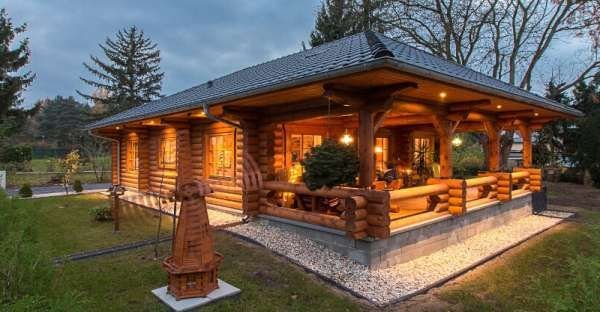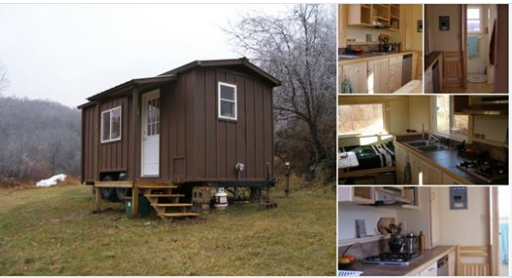
You’ll want to take a closer look at this classic post and beam cabin building. The small log cabin design has an open living space on the main floor, with a loft sleeping space upstairs accessed by a ladder. The log cabin design has a small covered front porch in the front. The post and beam cabin building located by Horsefly Lake in central British Columbia was built by its owners Sam and Monika. The log cabin design is a post and beam build, which uses logs instead of squared-off timbers as used in timber frame designs. This tiny log cabin design uses logs to support the roof structure, the loft floor, and the front porch. The walls that are between the log corner posts are built of standard two by six stick construction. The exterior of the log cabin design is a combination of naturally finished logs and board siding that is painted barn red. This small log cabin design is a good example of a quality post and beam log cabin design with a smaller footprint in this eco-building design.
The log cabin design has 320 square feet of space on the ground floor, plus an upper loft. The floors and the ceilings in this log cabin design are pine, and the walls in this eco building have a unique look. The walls are built from nailed live-edge boards that are place overtop painted drywall with gaps between the live edge boards that mimic chinked timbers. The large log beams are evident on the ceiling of the log cabin design and are what really sets this log cabin design apart from other log cabin builds and gives it a quality look. The post and beam log cabin design is connected to the grid with electric heat but has no running water. There is a post and beam outhouse that matches the log cabin design.


One characteristic of both timber wood cabins and post and beam cabin buildings is the skeleton of the wood cabin. The main difference between timber frame wood cabins and post and beam cabin buildings is achieved by exposing the squared timber logs or round log of the cabin building frame, which help to give the wood cabin its rustic appearance. Timber Framing. Timber framed cabin buildings are the traditional form of wood cabin construction that can be traced back hundreds of years. Some timber frame cabin buildings were erected during medieval times in Europe and are still standing today. True timber frame cabin buildings rely on tight-fitting joinery and the integrity of the building materials. Post and Beam Cabin Buiding. Many mountain wood cabins employ some elements of wood timber construction, either as the main building design or as accents in the form of roof supports, trusses, brackets, or braces. Post and beam log house construction often resembles timber-framed cabin buildings, with the distinction that post and beam construction utilizes the mechanical fasteners and often steel plate connectors to join adjacent members together. These connectors in post and beam cabin buildings may be hidden or exposed in a variety of ways. Wood post and beam log cabin designs are rarely used as the only structural system for a cabin building. Post and Beam Entrance. Like timber-framed cabin buildings, post and beam wood cabin construction also requires skilled carpenters to help create tight, well-crafted log joints.

